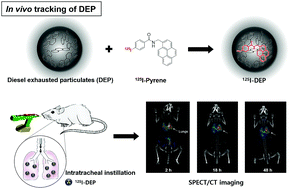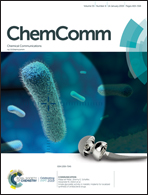Efficient and stable radiolabeling of polycyclic aromatic hydrocarbon assemblies: in vivo imaging of diesel exhaust particulates in mice†
Abstract
As a robust radioanalytical method for tracking carbonaceous particulates in vivo, polycyclic aromatic hydrocarbons from diesel exhaust were labeled with a radioactive-iodine-tagged pyrene analogue. Single-photon emission computed tomography and biodistribution studies showed high uptake and slow clearance of this matter in the respiratory system, which may underlie its severe toxicity.



 Please wait while we load your content...
Please wait while we load your content...